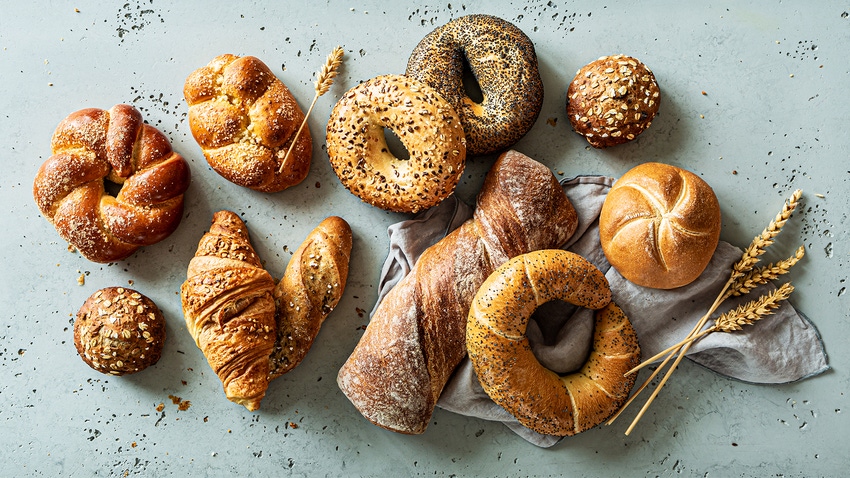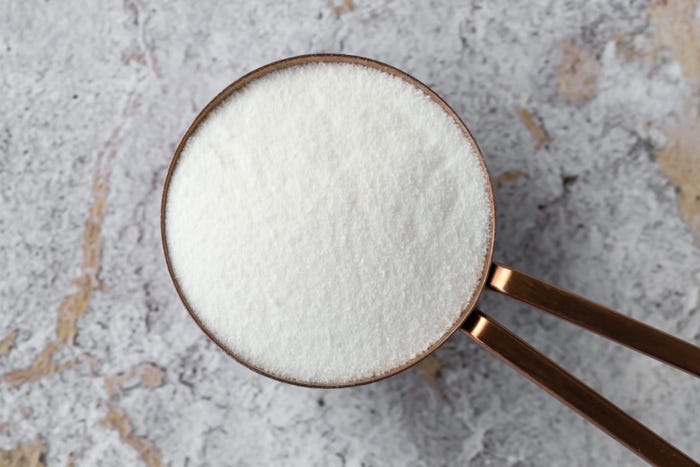Baking science revolutionizes healthier treats with next-gen ingredients
Despite challenges in reformulating ingredients, bakers are creating better-for-you baked goods with new sweeteners, fibers and techniques.

At a Glance
- Consumer demand for products with reduced sugar, natural sweeteners and functional additives is driving innovation in baking.
- Food scientists are developing new ingredients and techniques to create better-for-you baked goods.
- Manufacturers need to find ways to make healthy baked goods that still taste good and have the desired texture.
Remember back when the definitive “better-for-you” baked good was a SnackWell’s cookie? We do, too — and we give the brand props for laying the groundwork for a healthier bakery aisle.
The quantity and quality of better-for-you baked items that’ve landed on shelves ever since, however, make those sugar-laden SnackWell’s of yore seem like ancient history.
“More big bakery brands keep pushing into the market with offerings that fit keto-friendly, low-carb and no-added-sugar categories,” Thom King, CEO and chief food scientist, Icon Foods, said. “And that’ll keep driving demand.”
Meeting that demand almost requires bending the rules of baking science. Why? Making traditional baked goods better for you entails replacing “undesirable” ingredients — excess sugar, trans fats, “chemical” additives and more — with comparatively virtuous alternatives like “natural” sweeteners, plant proteins and “clean” preservatives.
And doing that while keeping the end product’s sensory profile in the ballpark of consumer expectations is no mean feat.
Tumbling tower
After all, rarely does an ingredient appear in a bakery formulation for no reason.
“When replacing ingredients in baked goods, it’s important to think about what functions they provide, and what better-for-you alternatives are available that could provide similar functionality,” Michelle Amyot, R&D specialist of bakery at Caldic Canada Inc., said. “Take sugar as an example. Sugar is critical in baked goods. It provides more than just sweetness, contributing to tenderness, volume, browning and moisture retention throughout shelf life.”
And sugar is just the start. “Milk supports browning reactions important in pastry crusts, biscuits and cookies,” Paula LaBine, marketing director of milling and baking solutions at ADM, said. “Eggs bring moisture and structural attributes, including a structurally sound cake crumb. And butter provides structure and richness to a range of bakery items.”

Manipulate any one and the whole formulation can start to feel like a Jenga tower fixing to tumble.
Sweetener symphony
Enter next-generation ingredients to stabilize that structure.
When it comes to sugar, “there isn’t one plugin solution for all baked goods that provides its sweetness as well as function,” according to King. Leveraging a “symphony of many ingredients working together and not a single instrument,” however, “is where the alchemy comes into play,” he explained.
He suggested pairing the calorie-free monosaccharide allulose with “a small amount” of a high-intensity sweetener such as stevia, monk fruit or both, for instance. As a saccharide, allulose behaves much like sugar; but with only 70% sugar’s sweetness, it needs a taste assist. Thus, teaming it with high-intensity alternatives creates “a perfect solution for replacing sugar,” King said.
Trial and error
Amyot agreed that sugar replacement demands a multi-ingredient approach. “Finding the right combination and use levels involves a lot of trial and error,” she said. Caldic’s TruSol Extol Sweetsolutions pre-blends as “a great option for manufacturers looking to accelerate the product-development process.”
The drop-in blends can replace some or even all a formulation’s sugar “with minimal impact on product quality,” according to Amyot. And because the company designs the blends to tackle multiple sugar functions while also meeting better-for-you labeling expectations and sugar targets, they “minimize the burden of testing individual ingredients.”
Clean cuts
When ADM approaches better-for-you bakery, LaBine said they don’t just reduce sugar, but replace its sweetness, rebalance its flavor and rebuild its function, too — all in a label-friendly manner.
“Our SweetRight agave fulfills the demand for sweetness derived from natural sources,” she explained. Its neutral profile, binding and browning properties, “superb” solubility, moisture retention and humectancy are boons in bakery. Also, with a sweetening potency 25% to 30% higher than that of sucrose, “less input is required to achieve the same sweetness level, supporting sugar- and calorie-reduction targets,” she added.
With all the responsible bona fides — USDA organic, kosher, halal, non-GMO and Fair Trade — “it helps capture discerning shoppers’ attention,” LaBine noted.
Fiber first
King encouraged bakers to consider fiber a sugar-slashing solution. “Prebiotic fibers aid in water binding, emulsifying and texturizing,” he said, adding that inulin paired with soluble tapioca fiber “works exceptionally well because of its gelling properties.”
The combination also emulsifies, enhances texture and mouthfeel and even emulates fat in bakery. “Prebiotic fibers simply enhance an ingredient deck, making it more appealing to consumers looking for low sugar and high fiber,” King added.

Fiber also appeals to consumers looking for digestive health, as well as weight and appetite management, according to proprietary ADM Outside Voice research. ADM/Matsutani LLC’s Fibersol prebiotic dietary fiber supplies that fiber while cutting sugar, lowering calories and helping “build back integrity through structural and binding qualities that can be lost when reducing formulation sugar,” LaBine said.
In with the good
With the sugar story dominating better-for-you baking, the case for fiber reminds us that adding “hero” ingredients — including nuts, ancient grains, proteins and more — also gives bakery brands a lever to pull. Pulling it, however, can introduce more formulation hurdles.
“When it comes to better-for-you fortification, yeast-raised applications present challenges in terms of processing,” Amyot said. “Careful testing and formulation tweaks are needed to ensure a baked good’s gluten network isn’t affected.” Modifications to mix, fermentation and proofing times may also be in order “to improve finished product attributes.”
Operational adjustments
Sherrill Cropper, new product development lab manager at Lesaffre, added that “changing just one baking ingredient alters the dough matrix, affecting product volume, texture and processing, including the amount of hydration and how well air cells are entrapped during mixing.”
This becomes evident in keto-friendly formulations, which “struggle to build a supporting network compared to wheat-based systems,” according to Cropper. That “adds a major bottleneck to production” and demands that formulators incorporate additives to create the expected crumb texture, provide production consistency and give the mix “tolerance to withstand strenuous processing conditions or to hold up when a line is down,” Cropper said.
Unfortunately, many dough improvers, conditioners and emulsifiers like mono- and diglycerides, sodium stearoyl lactylate (SSL), diacetyl tartaric acid ester of mono- and diglycerides (DATEM) and L-cysteine can look intimidating on labels. “Bakeries can now restore function while keeping up with better-for-you trends,” per Cropper.
Lesaffre’s Saf Pro Star-Zyme STR 801 dough improver increases dough resilience and eases machinability, for example, “adding secondary support for volume, strength and improved tolerance in keto, whole-wheat and inclusion bread,” she said. And because it appears on labels simply as “enzymes,” even skeptical shoppers should give it a pass.
And shoppers are skeptical. “Consumers are seeking ways to enjoy familiar products while meeting overarching wellness goals,” Cropper explained. “Rising interest in low- and zero-carb lifestyles and awareness around ancient grains and sugar content are giving consumers an appetite for new ways to enjoy baked goods.” Fortunately, bakery brands are giving them plenty of options to do so.
About the Author(s)
You May Also Like






